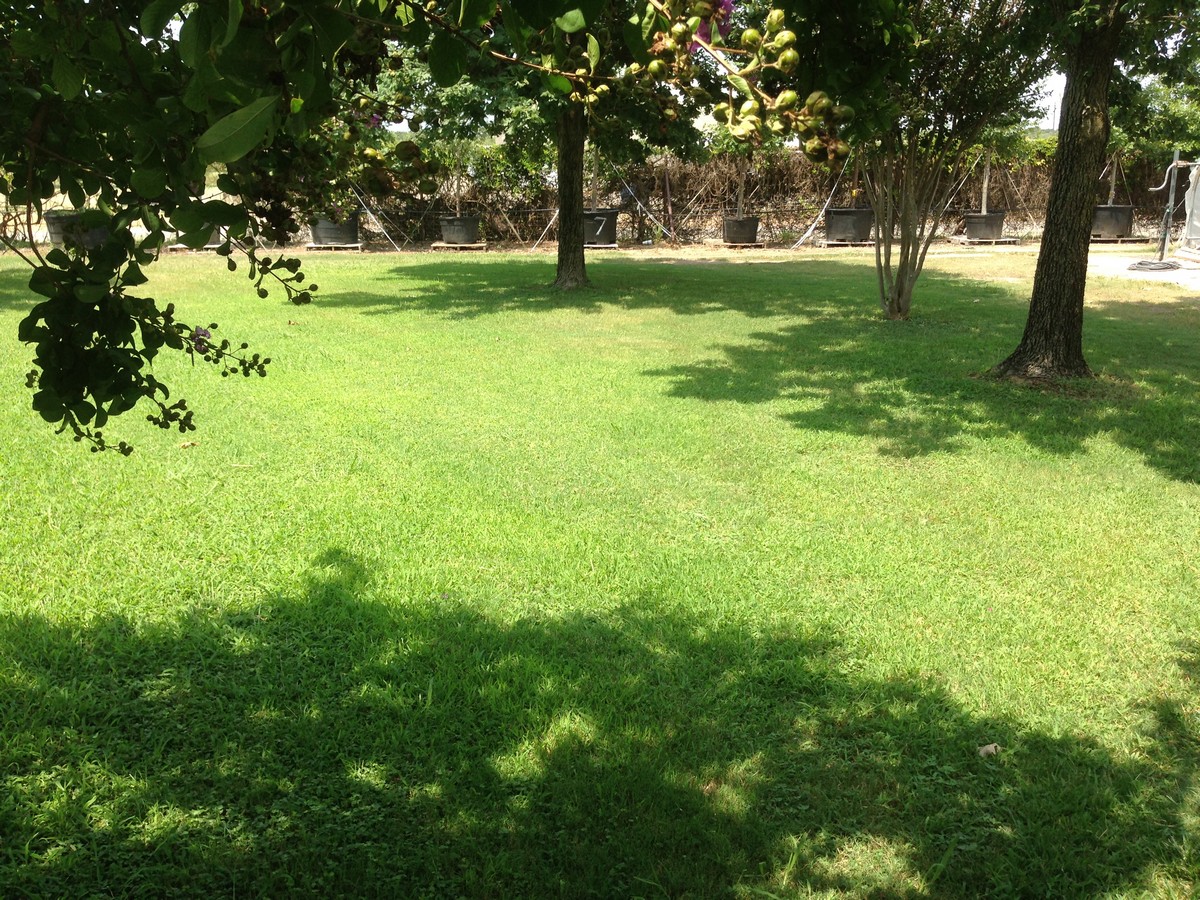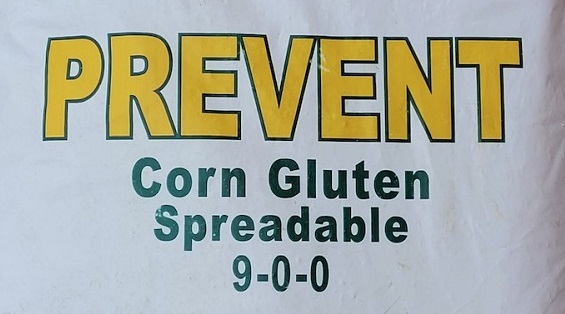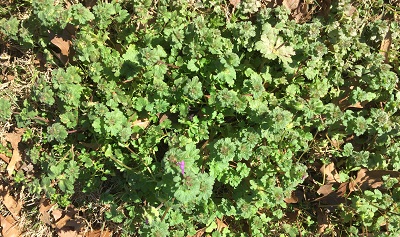Remember the old adage “an ounce of prevention is worth a pound of cure”? That certainly applies to the use of pre-emergent herbicides. Who wouldn’t prefer spreading a product on our lawns and beds that STOPS the weeds BEFORE they come up? A real no-brainer for me!
The correct product with the correct timing ensures success!
Because weeds are classified as “warm-season or cool-season”, according to the temperature at which they germinate, we can address a particular weed we have by timing the application of pre-emergent appropriately. I’ve said it before, and I’ll say it again: Timing is everything when dealing with weed control! Since the onset of cool fall temperatures varies from year to year in Central Texas, it is important to monitor weather forecasts and time pre-emergent applications for when the temperatures just start to cool in the fall.
Another important factor in determining which product to use and when to use it lies in the identification of the weeds you are trying to control. Chances are, if you had problems with a weed last year, you will also have problems with it this year. Bring samples to Backbone Valley Nursery, and we will identify your weeds if you are not familiar with them. It is important to know if they are grassy weeds or broadleaf weeds, and whether they germinate in the spring (warm season weeds) or in the fall (cool season weeds). It is also important to know if they are annual weeds or perennial weeds.
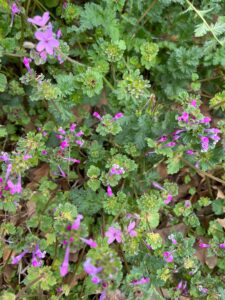
Learn What Weeds are Controlled by the Fall Application of Pre-emergent
Click HERE for an overview of cool-season weeds.
Click HERE for information on timing of different types of Sticker Control
DO NOT USE POST-EMERGENT WEED AND FEED PRODUCTS
You have all probably heard of the dangers of using “Weed and Feed” products on your lawns. This primarily relates to the POST-EMERGENT BROADLEAF WEED KILLER products sold in the spring. THESE PRODUCTS WILL DAMAGE TREE ROOTS. Remember, tree roots can grow one to two times the HEIGHT of the tree OUT from the tree, and application of these products under the canopy of the tree WILL damage the tree roots. Weakened trees are more susceptible to insects and disease, and this product definitely weakens trees.
Pre-emergent Herbicides prevent weed seeds from germinating
Pre-emergent products are much safer to use around established trees, as they only stop weed seeds from germinating, and are not active in killing established roots. Always read label directions for additional precautions.
We have both Organic and Chemical forms of pre-emergent available for use in the landscape. When using the Chemical forms, please read the instructions on the bag regarding how long to keep kids and pets off the lawn after application. In most cases, it is long enough for the lawn to dry after watering the product in, but be sure to check specifics.
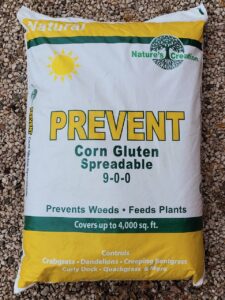 Corn Gluten Meal is a by-product of the corn milling process. It is an Organic alternative to chemical pre-emergent, and doubles as a slow-release Nitrogen source with about 10% N by weight. It is the best choice if you live near the lake or other water source.
Corn Gluten Meal is a by-product of the corn milling process. It is an Organic alternative to chemical pre-emergent, and doubles as a slow-release Nitrogen source with about 10% N by weight. It is the best choice if you live near the lake or other water source.
Again, timing is critical in order to realize the best results possible. With corn gluten meal, the wet/dry period must be managed carefully, AND, the product must also be applied BEFORE the weed emerges from the seed!
Corn gluten meal works by inhibiting root formation in germinating seeds. Weeds germinate and form a short, bent root. A short drying period is required after germination so the root does not develop after emerging. Too much water following germination may allow the weed root to recover and grow again.
IMPORTANT: You must apply about 1/2” of water at the time of application to activate the Corn Gluten Meal. The lawn MUST BE KEPT DRY for 4-5 days after application, so check the forecast and turn off the sprinklers. Any water applied within this time period will negate the effects of the corn gluten on emerging seedlings.
Ideally, corn gluten meal should be applied to lawns and beds in mid-September to early October in Central Texas. The recommended rate is 20#/ 1000 sq.ft. (Do not use the recommendation of 10#/1000 sq. ft. that is on the bag) Using the product at the higher rate ensures better control. Using corn gluten for several seasons will give better control in the long term.
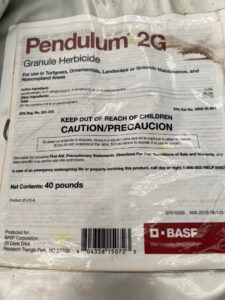 Pendulum 2G is a chemical form of pre-emergent that is safe to use on established Bermuda, Buffalo grass, St. Augustine and Zoysia lawns. It will not harm most tree species. It is best applied when the ground temperature is between 55-85 degrees. It will prevent germination of over 50 broadleaf and grassy weed species such as Annual Bluegrass, Chickweed, Purslane, Spurge, Oxalis, Crabgrass and Barnyard Grass. Usual application is in mid-September for cool-season weeds and in mid- February for warm-season weeds, such as Field Sandburs (yes, it even prevents those sharp grass burs-apply in early February, then again in 5-8 weeks, according to directions on the label)
Pendulum 2G is a chemical form of pre-emergent that is safe to use on established Bermuda, Buffalo grass, St. Augustine and Zoysia lawns. It will not harm most tree species. It is best applied when the ground temperature is between 55-85 degrees. It will prevent germination of over 50 broadleaf and grassy weed species such as Annual Bluegrass, Chickweed, Purslane, Spurge, Oxalis, Crabgrass and Barnyard Grass. Usual application is in mid-September for cool-season weeds and in mid- February for warm-season weeds, such as Field Sandburs (yes, it even prevents those sharp grass burs-apply in early February, then again in 5-8 weeks, according to directions on the label)
Apply the product a few days after mowing, and delay mowing for a few days after application. Water it in with ½” of water to activate. A 40# bag will cover 21,780 sq.ft.(1/2 acre).
As with all chemical products, be sure to read the label and follow all recommendations. Measure your lawn area for correct application rates. For increased uniformity, apply the product at half the rate in one direction, then half the rate perpendicular to the first application. Proper application rate can be just as important to your success as the timing of the application,
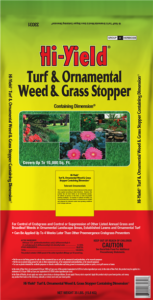
HiYield Weed and Grass Stopper with Dimension: This chemical form of pre-emergent is safe on established lawns such as Buffalo Grass, Bermuda, St. Augustine and Zoysia, as well as on established landscape beds. It is applied in the early fall (Mid –September to October) to prevent cool-season weed seeds, such as chickweed, henbit, burweed, clover and annual ryegrass from germinating. It is better to err on the “early side” of the application time, as late applications may miss the timing of weed seed germination!
It is an excellent Crabgrass preventer when applied in the spring, and also has post-emergent activity on Crabgrass for up to 4 weeks after it has emerged. It also controls oxalis, spurge, pigweed and black medic. Timing for spring application is around the time the Redbuds are blooming! (Mid-February)
For best results, apply the product a few days after mowing and delay mowing for a few days after application. Water it in with about ½” of water. In southern lawns, it is usually applied at the rate of 3.5#/1000 Sq. ft.
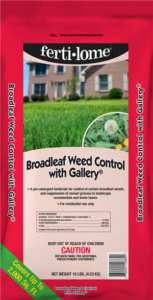
Fertilome Broadleaf Weed Control with Gallery: Some broadleaf weeds are not controlled by other pre-emergent herbicides and require a chemical called Isoxyben to prevent their seeds from germinating.
Use this product to control Henbit, Spurge, Khaki Weed and Oxalis in the early spring.
Use this product to control Lawn Burweed, Henbit and Bur Clover in the fall.
As with all chemical products, be sure to read the label and follow all recommendations. Measure your lawn area for correct application rates. For increased uniformity, apply the product at half the rate in one direction, then half the rate perpendicular to the first application. Proper application rate can be just as important to your success as the timing of the application.

